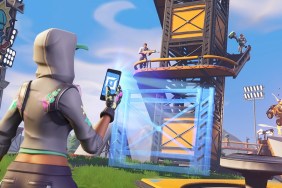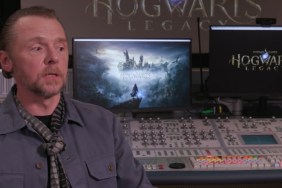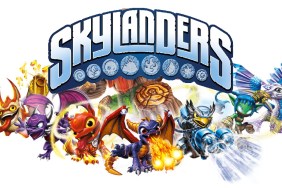Far over, the misty mountain cold, to dungeons deep, and bricks of gold…
As shown at a recent event in San Francisco, Lego the Hobbit’s missions transition from hand-drawn images to the familiar retelling of scenes from the movie, while Saruman actor Christopher Lee narrates the full story (recorded specially for the game). The scene that we were encouraged to play (of two available) was the encounter at Goblintown. A brief cinematic separates Bilbo from the Dwarves who are then taken to the Goblin King, where the scene plays out with licensed audio from the films.
The classic comedy of the series applies, with broad, silly comic beats, not dissimilar to those from the source films. When the action starts, it’s the familiar Lego gameplay: the destruction of enemy mini-figurines and use of character-specific abilities to solve puzzles. There are impassible paths clearly meant for characters acquired later, like Gollum, and a few silver objects, the kind that traditionally require explosions and promise hidden treasures for free play mode.
Lego The Hobbit borrows the characters and their traits as portrayed in the films, with each having a specific skill or ability as in traditional Lego games—Fili fires arrows, Bomber can roll like a ball, Thoren Oakenshield is invulnerable while wielding his shield, etc. Different this time around is that the game requires the Dwarves to buddy up to complete certain objectives, like performing a finishing move on a goblin mini-boss, which requires players to cooperate directly if playing multiplayer.
Executive Producer Nick Ricks says that the story will contain the first and second films (though it wouldn't be surprising to see the third crammed in there). This was Ricks' first time seeing the game playing on the newer hardware, with advances in dynamic lighting and textures, since dev kits for the next-gen consoles are still hard to come by. Ricks said the game has a peculiar lighting challenge; since the characters are modeled exactly after real Legos, it can produce odd lighting artifacts and shapes. It’s a tribute to the skill of the development team that none of these are in the pre-alpha preview build.
Nearby my station, two brothers no older than ten years-old played the game together, which forced them to temporarily stop bickering and co-operate to defeat the Goblin King during the first part of the mission. In the background, thousands of goblins run around the environment. Ricks tells me these lower-resolution versions are used as the character models for the 3DS and Vita versions of the game, developed by another team.
At one point, the younger brother has trouble getting down what he needs to do, prompting his brother to help him. This is part of the design philosophy of these games, and Ricks highlights one of the problems with the series development and the reason for maintaining the drop-in, drop-out co-op. Since the game is meant for players 5-12, it has to be fun for younger players, for whom what core gamers might consider basic tasks may be difficult, and yet at the same time be entertaining for older players who may enjoy the collecting part of the game.
Another part of the goal of Lego The Hobbit is to continue the evolution of the RPG elements from Lego Lord of the Rings. One of the ways they’ve enhanced this development is through the collection of construction blocks that can be used to open up “Instruction Builds" as found in the recent Lego Movie Videogame. There, the Instruction Builds were a good thematic tie-in to the movie, where hero Emmet Brickowski, a generic Lego construction worker, unlocked certain elements by building actual Lego sets from a set of instructions as a puzzle mini-game. As part of the RPG element of Lego the Hobbit, the Instruction Builds now require the collection of different construction materials you can collect from destroying different items, and more expensive blocks (like gold) allow the dwarves to open up different paths.
While the other mission available for play had a few bugs (the background of Bilbo’s house disappeared), the devs were quick to note everywhere there might be a problem for fixes. It also gave some insight into the design and playtesting process, as the devs watched small children play it (you could see them making mental notes about what the kids grasped or didn’t). Ricks told me, for instance, that they’d removed all the text instructions that appeared on-screen because they realized no one was reading it, opting instead for objects in the game that could be clicked on for explanations.
Lego the Hobbit is shaping up nicely, and it’s great to see the series continue to evolve. It will have players embarking on an epic quest to reclaim the Dwarven homeland on April 8th, 2014 on Xbox One, Xbox 360, PS4, PS3, Wii U, PC, Vita, and 3DS.










